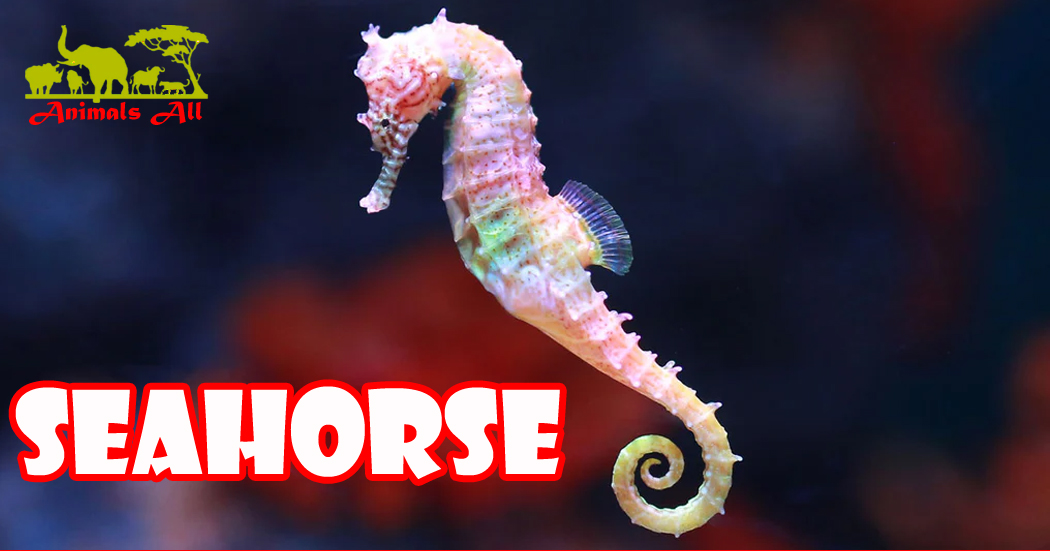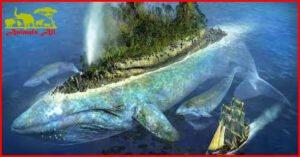
Amazing marine animal seahorse
Seahorse (Latin name: hippocampus ) is a general term for several small fish species in warm seas of the Syngnathidae family. It is a small marine animal with a body length of 5 to 30 cm. It is named because its head is bent at a nearly right angle to the body. Its head is shaped like a horse’s head and forms an angle with the body. Its snout is long and tubular, its mouth is small, and it has one dorsal fin, which is composed of fin rays. The eyes can move independently.
Seahorses are slow-moving but very efficient in catching fast-moving, hiding copepods. They are found in the Atlantic, Europe, the Pacific, and Australia.


Morphological characteristics
The head of the genus Hippocampus is flattened laterally, with two nostrils on each side of the head. The head is bent at a nearly right angle to the body. The fish body is thick and flattened laterally, and is completely wrapped in a bone ring. The mouth is a pointed tubular shape, which cannot be opened or closed, so it can only suck small animals in the water for food. The eyes can be rotated up and down, left and right, or forward and backward. The chest and abdomen are protruding, and the trunk is composed of 10 to 12 bone rings.
The body length is generally about 15 to 30 cm. The tail is slender and quadrangular, with a thin and pointed tail end that can be curled and grasped, often in a curled shape. The head is curved, forming a large obtuse angle or right angle with the trunk, with a protruding crown on the top and small spines at the end of the crown; the snout is tubular; the mouth is small and terminal; the gill openings are small; the whole body is completely wrapped by membrane bone pieces, with a dorsal fin without thorns , and no pelvic fins and caudal fins . The dorsal fin is located between the trunk and the tail; the anal fin is short ; the pectoral fins are well developed; there is no caudal fin; its fins are not easy to see with the naked eye.
But with high-speed photography, if you pay attention, you can see the moving spines . These spines can move back and forth at a speed of 70 times per second. Depending on the waves transmitted from the dorsal fin to the other end, the seahorse can ride on these waves and move freely forward and backward or up and down.
Habitat
In natural waters, seahorses usually prefer to live in slow currents on coral reefs. Since they are not good at swimming, they often use their prehensile tails to tightly grasp coral branches and seaweed leaves to fix their bodies so as not to be swept away by the rapids. Most species of seahorses grow at the junction of estuaries and the sea, so they can adapt to areas with different concentrations of seawater and can even survive in fresh water. Seahorses and seahorses have very small mouths and are only suitable for foraging for live bait. They are not good at swimming and cannot hunt quickly.
Living habits
Activity
Due to its mimicry and adaptation characteristics, seahorses have special habits and prefer to live in subtidal areas where algae or sea leeks grow abundantly. They are very lazy and often cling to the stems and branches of algae with their curled tails. Sometimes they hang upside down on floating algae or other objects and drift with the current. Even if they temporarily leave the object they are attach to for feeding or other reasons, they will find another object to cling to after swimming for a distance. The swimming posture of seahorses is very graceful.
The fish body stands upright in the water, and they swim slowly (only 1 to 3 meters per minute) completely relying on the high-frequency wave-like swings of their dorsal and pectoral fins (10 times per second). Seahorses are generally active during the day (morning and afternoon) and are inactive at night. When the water quality deteriorates, oxygen is insufficient, or they are attack by enemies, seahorses often make a gurgling sound due to the contraction of their pharyngeal muscles, which sends a “help” signal to the breeders. However, they also make sounds when feeding on bait on the water surface, so they should be distinguish.
Prey
Seahorses are unique among fishes in having a curved neck and long snout, which makes them look similar to horses. The overall shape of seahorses, coupled with the lack of a tail fin, makes them the slowest swimmers on Earth. They cannot swim fast and are usually just tether to the seafloor by their curled tails, like seaweed.
Because all marine life likes to eat copepods, they are extremely sensitive to the ripples caused by the approach of predators. Once copepods detect the approach of an enemy, they can swim more than 500 times their own length per second. In comparison, the cheetah, which is know for its fast running, only travels 30 times its body length per second.
But seahorses. Seahorses must use their arched necks as springs to twist their heads forward to catch prey, which limits their effective distance for catching food to the length of their necks, or 0.1 cm. However, seahorses can use the special shape of their heads to quietly approach their prey and then catch it, with a success rate of over 90%. The seahorse’s mouth is located at the end of its long snout. When it moves toward its prey, the water ripples near its snout remain almost motionless. So it can sneak up on its prey and successfully catch its prey.
Feeding habits
Seahorses swallow food by stretching their gill covers and snouts. The size of the bait should not exceed the diameter of the snout. They are selective about the type and freshness of the bait. The foraging range of seahorses is only about 1 meter, so the bait should be throw in places where they often gather. In natural sea areas, seahorses mainly feed on small crustaceans, mainly barnacle larvae of copepods and cirripeds, larvae and adults of shrimps, fireflies, mysids and gammarus. Under artificial breeding conditions, mysids and cherry shrimps are the best, followed by amphipods and amphipods.
The amount of food a seahorse eats is closely related to water temperature and water quality. Within the suitable temperature range, when the water temperature is high. The amount of food eaten is large and the digestion is fast. When the water quality is poor, the amount of food eaten is reduced or even stopped. Under normal conditions, the daily food intake of a seahorse is about 10% of its body weight. The seahorse eats a lot at a time and has a strong hunger tolerance. From newborn fry to adult fish, the hunger tolerance period can reach 4 to 132 days.
Exercise
The structure and function of the seahorse’s tail are very different from those of other fish. When resting, the seahorse uses the curling ability of its tail to wrap the tail end around the stems and branches of seaweed. Therefore, seahorses often live in deep sea areas where algae are lush. The swimming posture is also very special. With the head facing upward and the body slightly tilted upright in the water. It relies entirely on the dorsal fin and pectoral fins to move. The fan-shaped dorsal fin plays a role in wave propulsion.
Distribution area
Crowned seahorse: Yellow Sea, Bohai Sea, Qinhuangdao coast, Tanggu offshore, Yellow River Delta.
Spiny seahorse: East China Sea, South China Sea, Taiwan, waters off Fuding, waters off Penghu, waters off Kaohsiung, and waters off Lingshui.
Japanese seahorse: South China Sea, East China Sea, Yellow Sea and Bohai Sea, Beihai coast, Penghu coast, Dachen Island coast, Xiamen coast, Qingdao coast, Pingtan Island coast, Yangjiang coast, Shanwei coast, Qinhuangdao coast, Dalian coast, Yantai coast, Pingtung coast, Yingkou coast, Sanya coast, Lingshui coast, Taizhou coast.
Seahorses: Bohai Sea, East China Sea, South China Sea, Taiwan, Lingshui offshore, Shanwei offshore, Xiamen offshore, Lingshui estuary, Lanyu offshore.
Hippocampus clarkii: off the coast of Shantou, off the coast of Kaohsiung, and off the coast of Qionghai.
Three-spotted seahorse: Off the coast of Lingshui, off the coast of Dongshan, off the coast of Shanwei, off the coast of Xiamen, off the coast of Kaohsiung, Hebei Province, Tianjin, Liaoning Province, Shandong Province, Jiangsu Province, Shanghai, Fujian Province, Guangdong Province, Zhejiang Province, Guangxi Zhuang Autonomous Region, Taiwan Province, Hainan Province.
World
Crowned seahorse: Japan.
Spiny seahorse: Japan, Singapore, Red Sea.
Japanese seahorse: Japan, Korea, western Pacific, coastal China, Vietnam, Thailand and Cambodia (distribution needs to be confirmed).
Hippocampus clarkii: China, India, Indonesia, Japan, Pakistan, Philippines, United Republic of Tanzania, Vietnam.
Seahorse: Japan, Indian Ocean, Singapore, Philippines, Hawaiian Islands, Australia and East Africa, Australia (Northern Territory, Queensland), Fiji, French Polynesia, China, India, Indonesia, Japan, Malaysia, Federated States of Micronesia, New Caledonia, Pakistan, Papua New Guinea, Philippines, Singapore, Solomon Islands, Thailand, Tonga, United States (Hawaii), Vietnam.
Three-spot seahorse: Singapore, coastal areas of the South Pacific Islands, western Indian Ocean, eastern Indian Ocean, northwest Pacific, western and central Pacific, Australia, China, Egypt, French Polynesia, Guam, India, Indonesia, Japan, Malaysia, Mauritius, Micronesia, Mozambique, New Caledonia, Pakistan, Papua New Guinea, Philippines, Reunion Island, Western Samoa, Seychelles, South Africa, Tonga, Tanzania, United States, Vietnam.
Reproduction method
It is very simple to distinguish the sexes of seahorses and pipefish. The males have an abdominal pouch (commonly known as a brood pouch), while the females do not.
It’s true that male seahorses never play with their young. But they outdo human fathers in another respect: sire and dam. Seahorses are the only animals on Earth where males sire and dam offspring.
Male seahorses have a brood pouch on their abdomen, front, or sides. During mating, the female seahorse releases her eggs into the pouch, and the male is responsible for fertilizing the eggs. The male seahorse keeps the fertilized eggs in the pouch until they are fully develop. At which time he releases them into the seawater. [4]
Seahorses are not hermaphrodites, only male seahorses hatch. The breeding season of seahorses is from May to August every year. During this period, the mother seahorse lays eggs in the brood pouch on the abdomen of the father seahorse. After 50 to 60 days, the young fish will be born from the brood pouch of the father seahorse. Therefore, it is the father seahorse who is responsible for raising the children. Although the father does not really give birth to the children. The hatching still needs to be complet by the father. The father’s brood pouch only serves as an incubator, and the eggs still come from the mother. August to September is the peak period, and fishermen often use nets to catch them at this time.

